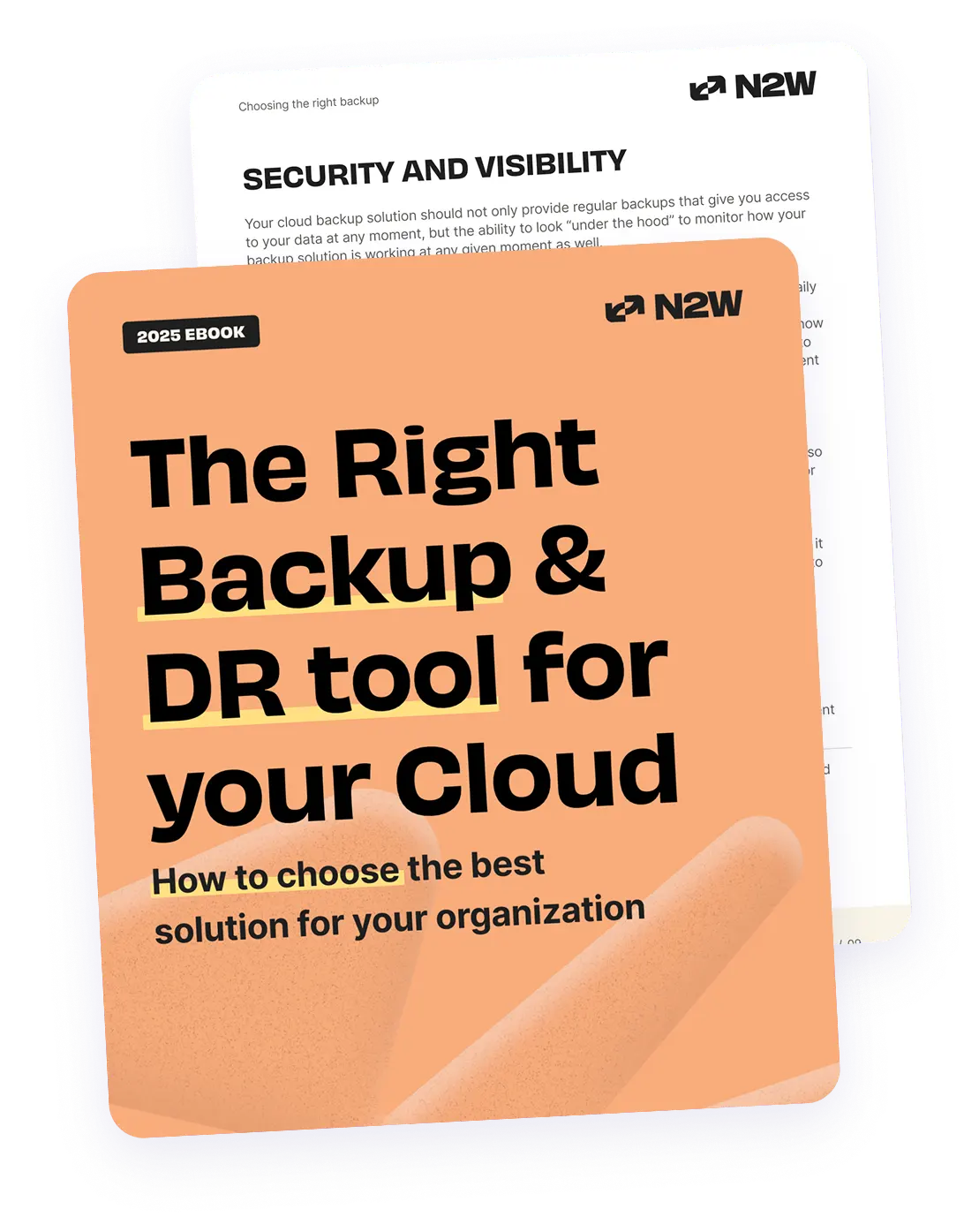The importance of having your business-critical data properly backed up cannot be overstated. Because most businesses today completely rely on data, that data needs to be well protected. There are numerous cases of companies going out of business due to losing data, and no one wants to be the next cautionary tale, which is why we’re going to cover a couple popular legacy backup strategies and how they’re different in an AWS environment. After all, a lot has changed since the old days of bare metal.
In the past, much more attention was paid to this topic, as backups were not so easy to manage. Most of the processes were manual, and there was a lot of room for mistakes. Also, storage costs were much higher than they are today, so it was very hard to just back everything up all the time. In order to improve this entire process while also keeping costs as low as possible, various backup strategies were introduced.
Backup Strategies in the Old Days
There are many legacy backup strategies —and even more variations. But we’re going to focus on the two most popular: “Grandfather-Father-Son (GFS)” and “3-2-1.”
Grandfather-Father-Son (GFS)
Grandfather-Father-Son (GFS) was designed to provide a lot of flexibility while keeping costs as low as possible. Three different backups (typically: daily, weekly, and monthly or quarterly, yearly, etc.), each with its own retention period, provided you with enough data durability to ensure necessary requirements were met.
If you had to keep a specific set of data for one year, for example, you could have daily data backups with a retention period of 15 days, along with weekly backups with a retention period of 6 weeks and monthly backups with a retention period of one year. With these, you were well covered to fulfill requirements while not overspending on storage costs. You also achieved a very granular data backup strategy, with multiple restore points early on and fewer and fewer ones as time went by.
3-2-1
The 3-2-1 backup strategy was designed to ensure the safety of your data. This was done by keeping three different copies of your business data: a primary one and two backups. The latter always had to be stored on different storage devices, with one shipped to an off-site storage location.
Companies used this backup strategy for their most important data —data that simply couldn’t be lost for any reason. Data can be corrupted, and storage devices can fail, so it makes sense to have multiple backups to ensure that whatever happens, one copy of your data is always available.
What Changed with the Introduction of Public Clouds?
With the introduction of public clouds and the associated storage offerings, including very high data durability and availability, there was simply no longer any need to create and uphold extreme data protection and retention plans. AWS S3 storage, for example, boasts 99.999999999% data durability (along with 99.99% availability)—not to mention a high level of security. Also, many of the data backups on AWS are done incrementally, which can significantly cut costs.
Speaking of costs, with $0.023 per GB stored, S3 greatly reduces the expense of storing your important data, and with cold storage like AWS Glacier, the price goes down even more. At this point, hardware storage can’t even compete, plus, the process of obtaining storage took weeks in the past, while now everything is available to you within minutes or even seconds.
Let’s take a look at how the AWS Cloud, for example, specifically affected the two backup strategies we initially discussed.
Grandfather-Father-Son (GFS) and AWS
While there are significant differences between using this legacy backup strategy in a data center and on AWS, there is still a case for GFS to be used in the public cloud. The idea of removing some of the costs by introducing different data retention cycles still makes sense and can still be applied on AWS.
For example, you can have a backup process in place that will send the data to an S3 bucket daily, and that bucket will have a lifecycle policy to store the backups for 40 days (which you can setup in minutes with N2WS). That way, within the first 40 days, you have regular backups and can go back to various points in time if needed.
The weekly backups can send the data to a different subfolder in the same bucket, with a lifecycle policy that keeps the data for five to six weeks before expiring it. And the monthly backups could be stored for 16–18 months, with a data lifecycle policy that will actually move the data to a Glacier tier for cold storage, therefore further reducing the cost of keeping the data long term. Or, you could simply utilize S3 lifecycle policies and have the same backup data moved from S3 Standard to something like S3 Infrequent Access or Intelligent-Tiering.
In other words, there are a lot of options you can look into and adjust per your given use case while still using the Grandfather-Father-Son backup strategy.
3-2-1 and AWS
Where the Grandfather-Father-Son backup strategy still makes sense in today’s world, as it is actually a data retention plan, the 3-2-1 strategy is a different story. Given what’s provided by AWS Cloud, there’s almost no reason to think about data durability. Also, as data is automatically replicated within three different Availability Zones on AWS (think data centers), you already have the different locations holding the data for you.
You could argue that this legacy backup strategy could still be useful today with some slight modifications. For example, you could back up your primary data to S3, which would serve as a highly durable backup, but also create a cross-region replication that would send that data to another AWS region, where it could be archived to AWS Glacier using a lifecycle policy. That way, you would still have three versions of your data in place and would be spreading your backups across multiple regions (or even different AWS accounts) while also utilizing a cold storage option.
Legacy Backup Strategies and AWS
Certainly, a lot has changed in the last decade, and many things that were commonplace are now obsolete, faded away into obscurity. But there are still some good ideas and principles from the past that can be used in one way or another.
When it comes to backing up your crucial data, you can improve this mission-critical process by using third-party tools like N2WS Backup & Recovery. This cloud-native product (now supporting AWS and Azure) not only helps you keep your data safe but also utilizes various strategies to greatly reduce the cost of storing it.
Find out how much you can save with our AWS Cost Savings Calculator 💰

Laurent is a Senior System Engineer at N2WS and AWS Certified Solutions Architect with more than 10 years of experience. (He's also both bilingual and the lead singer of a French rock band in the UK, making him très cool.)
